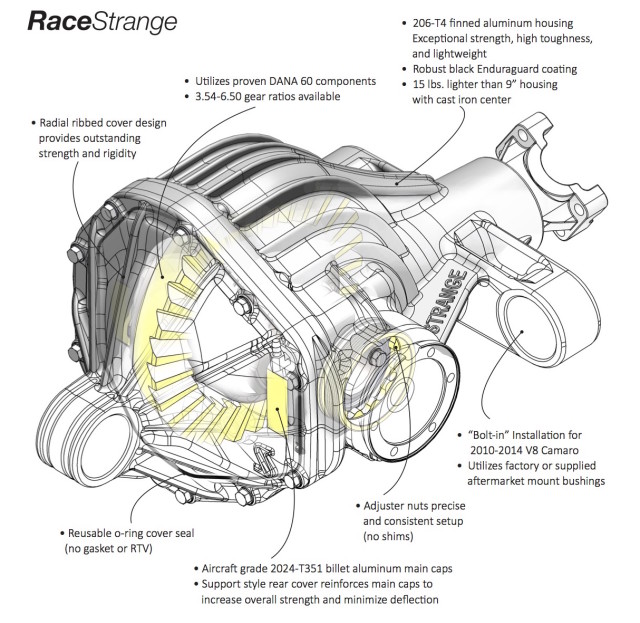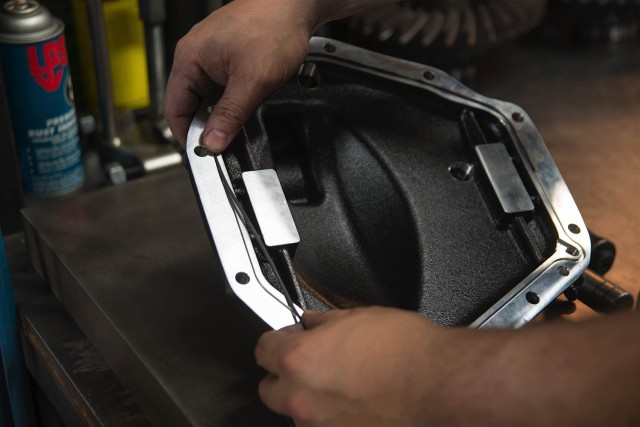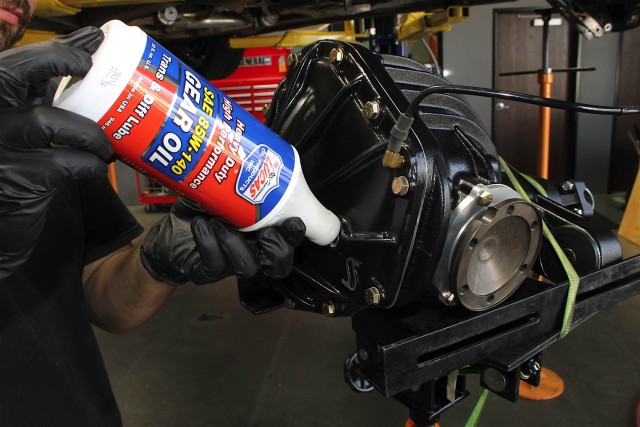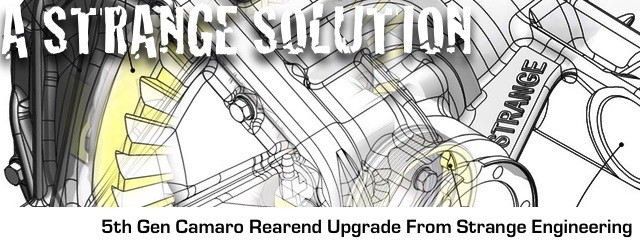 When the fifth gen Camaro made its debut for the 2010 model year, it marked a radical departure from the previous F-body cars that ended production in 2002. While the clean-sheet design stuck to the front-engine/rear drive layout that defines a pony car, in place of every previous Camaro’s live rear axle (and torque arm suspension in the fourth gen cars) was a new independent rear suspension.
When the fifth gen Camaro made its debut for the 2010 model year, it marked a radical departure from the previous F-body cars that ended production in 2002. While the clean-sheet design stuck to the front-engine/rear drive layout that defines a pony car, in place of every previous Camaro’s live rear axle (and torque arm suspension in the fourth gen cars) was a new independent rear suspension.
GM’s engineers were no strangers to IRS for high-horsepower cars, of course, having developed the C5 Corvette and its transaxle rearend coupled with a unique transverse mono-leaf suspension for the 1997 model year. But the Camaro would utilize a more conventional layout, with a separate differential housing and multi-link coil-sprung rear suspension.
Mostly Better. Mostly.
The advantages of IRS are numerous. Compared to a live axle, there’s a whole lot less unsprung weight, and the suspension can be tuned with far greater precision to give better handling response and grip. However, there are some tradeoffs; a live axle is preferable for straight-line performance, especially in drag racing, and it’s typically easier to swap out the entire rearend for a more substantially-built one, should you start putting more power to the pavement than stock.
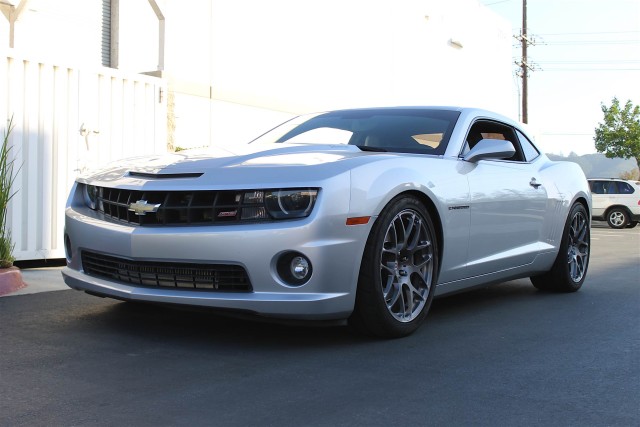
To demonstrate Strange’s 9 3/4-inch Camaro reared, we have a perfect candidate: This is Turbonetics’ fifth gen development car, used to test its 50-state legal turbo kit and their Stage 2 upgrade. Producing 560 horsepower to the wheels, the emissions-legal version of the Turbonetics kit is typical of what kind of power people are making with totally streetable cars these days.
Strange recognized the need for an improved reared assembly for the 2010-2014 Camaro just as soon as enthusiasts got their hands on them – Jeff Capek, Strange Engineering
It turns out that we knew of a 5th Gen that could definitely use a differential upgrade – in the past, we’ve shown you this particular Camaro’s evolution from 560 horsepower to the tires at 8 PSI with the Turbonetics 50-state emissions legal single-turbo system to a fire-breathing Stage 2 configuration that ups the boost to 14 PSI and lays down more than 800 horsepower to the pavement. That’s pretty impressive for a single-turbo setup on a stock LS3, but like everything we’ve seen from Turbonetics, it was designed to be as bulletproof as they could make it. Our job was to give it a differential that was just as bulletproof as the powerplant.
A Bigger Hammer
When the supercharged, 580 horsepower (at the brochure) Camaro ZL1 was developed, Chevy’s method of addressing the potentially overstressed differential was to go big. With a 9.9-inch ring gear and a massive cast iron housing to match, the ZL1’s rearend is a triumph of brute force. We’ve even used it in one of our own project car builds when we knew we’d be making way more power than the stock SS pumpkin could endure. But that maximum overkill approach has a definite cost — weight, and a lot of it.
Doing a dedicated casting does require more design work and initial expense, but the advantages of perfect fitment, lightweight aluminum housing, and ‘OE quiet’ gears are well worth it. – Jeff Capek, Strange Engineering
Strange’s approach was to create a rearend that was custom-designed for the Camaro application, using the right materials and engineering to achieve outstanding strength and durability without simply adding more meat. The Strange independent 9 3/4-inch rearend starts with a bespoke 206-T4 cast aluminum housing designed to be a direct replacement for the factory SS component.
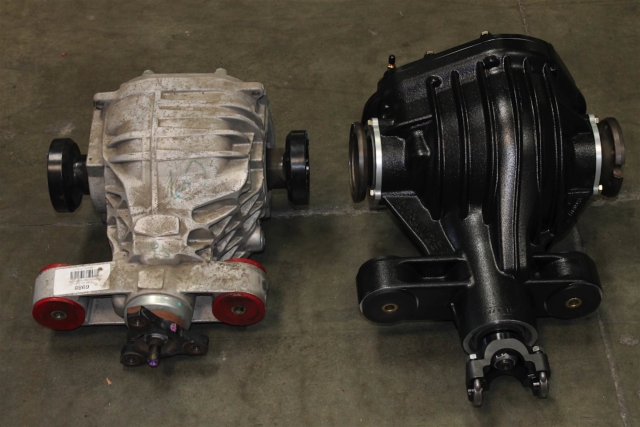
A side-by-side comparison of the stock Camaro SS diff (left) with the Strange 9 3/4-inch unit. It’s apparent just by looking that the Strange component is beefier, but it only weighs 20 pounds more than the factory 218mm differential thanks to high strength aluminum construction. The Strange diff uses stock-style mounts, making it compatible with OEM bushings and solid aftermarket replacements, as well as the supplied polyurethane inserts.
It’s completely compatible with factory-style mounting bushings, which means that any of the aftermarket options will work as well, giving you plenty of choices in durometer selection if you don’t want to use the supplied polyurethane components. “Doing a dedicated casting does require more design work and initial expense, but the advantages of perfect fitment, lightweight aluminum housing, and ‘OE quiet’ gears are well worth it,” Capek explains. The design was good enough, in fact, to find its way into another aftermarket company’s products as well. Per Capek, “Art Morrison is also using this reared for its independent multilink suspension cradle.”
Dana 60 components were selected for this application because of the exceptional strength of the gearset, 35 spline axles standard, and stout differential while maintaining very quiet operation – Jeff Capek, Strange Engineering
The heart of the Strange Camaro rearend is the Dana 60 gearset, which is available in 3.54, 3.73, 4.10, 4.30, and 4.56 ratios. In addition to being physically larger than the industry-benchmark Ford 9-inch gearset, the Dana 60 has less hypoid pinion offset, which reduces parasitic drag and increases efficiency.
“Dana 60 components were selected for this application because of the exceptional strength of the gearset, 35 spline axles standard, and stout differential while maintaining very quiet operation,” Capek explains.
In addition to multiple gear ratios, Camaro owners also have a wide choice of differential options, depending on how they’ll be driving the car. “The factory clutch style limited slip differential does a marginal job of torque biasing in situations of unequal traction,” Capek explains.
The Strange differential arrives with your choice of gears and LSD, locker, or spool, professionally set up for durability and quiet operation.
“The differential options available for the 9 3/4-inch rear are a helical gear Strange S-Trac, a helical gear Eaton, and a Detroit Locker,” says Capek. “Both of the helical gear units achieve torque biasing by internal gear separating forces that generate friction inside the housing. One advantage of the Strange S-Trac over the Eaton is that more attention was given to pocketing, which makes it lighter. The operation is smooth and quiet with progressive power transfer. They are comparable in strength to a locker, but will be limited in extreme unequal traction situations.”
Helical limited slip differentials are a good choice for daily-driven cars, and for cars that will see track day or autocross duty thanks to their refined operation that’s more or less undetectable to the driver. For a street/strip Camaro, the locker might be a better choice though; per Capek, “A Detroit Locker does not use clutches or gears, but rather dog rings. These are locked together under power and unlock when executing corners. Because of this, a Detroit Locker is clunky and noisier than a helical style differential, but the advantage is it will deliver power to the tire with the most traction in any situation.”
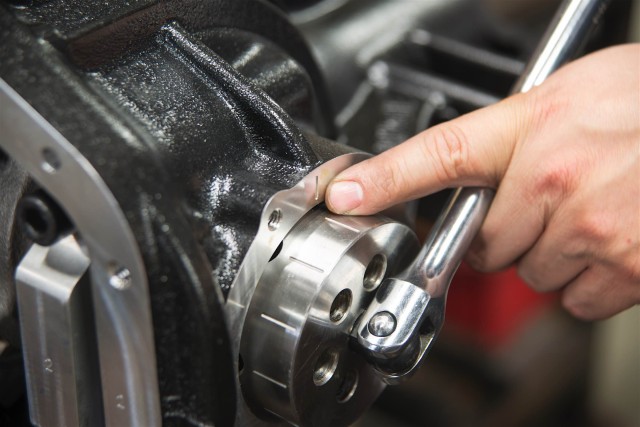
Ring gear backspacing and carrier bearing preload are set via threaded adjusters rather than shims, much like in a typical Ford 9-inch third member.
Hardcore drag racers who want to keep the Camaro’s IRS but need as much simplicity and durability as possible are covered too. Capek adds, “For the ultimate in strength and light weight there is the spool. This offers no differentiation and is only recommended for drag racing.”
Some Assembly Required
While the Strange Camaro rearend is a direct bolt-in replacement for the factory diff, it does require some supporting aftermarket components. The good news is that they’re all parts you should be upgrading from factory spec anyway.
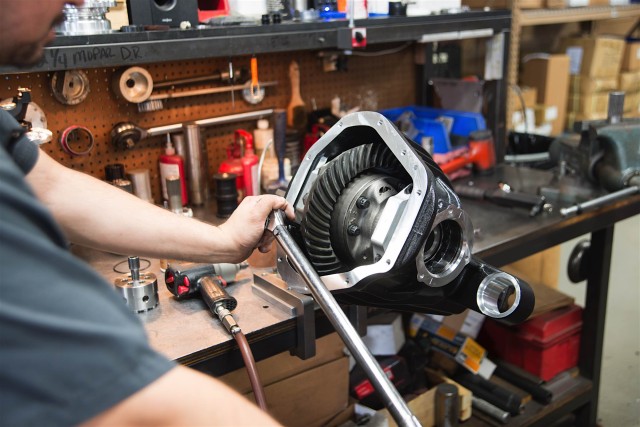
Aircraft grade 2024-T351 billet aluminum main caps and a support-style rear cover combine to fight deflection under heavy torque loads.
Per Capek, “There’s no cutting, welding, or modifications. Aftermarket CV axle shaft assemblies and an aftermarket driveshaft are required, though. Strange offers two different axle-flange-to-axle-flange widths to utilize Driveshaft Shop stock replacement axle assemblies or DSS and Gforce Engineering Ford 9-inch axle shaft assemblies.”
For the OEM-style half shafts, Strange offers a 14.313-inch flange-to-flange stub axle set-up, while the 9-inch styles require Strange’s 17.30-inch wide stub axles. “In order to get the correct driveshaft length, the customer needs to specify a cast iron or chromoly pinion yoke,” Capek adds.
Switching from the stock two-piece driveshaft to a custom piece from the Driveshaft Shop offers a substantial weight savings.
Simply Better
For the majority of fifth gen Camaro owners, the stock SS differential will do the job. But it’s a car that attracts engine mods like Justin Bieber attracts tweens and scorn, and it needs a driveline that can handle what owners throw at it. “Today’s consumer wants their vehicle to do everything,” Capek says. “They want to make 1,000 rear wheel horsepower, flog it at the track, and then drive it home while retaining factory street manners. This setup accomplishes that.”
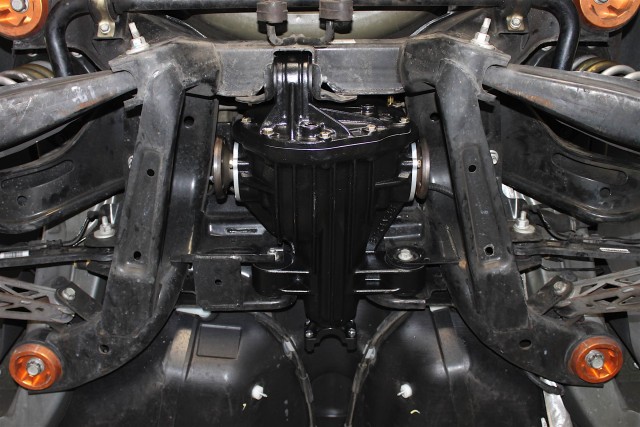
While the Strange differential is a direct fit in the Camaro’s rear suspension cradle, it will require an aftermarket driveshaft and half-shafts. We went with both from the Driveshaft Shop on our Camaro, matching them to the torque capacity of the new differential unit. The differential is available in two different stub axle widths to match both OEM-style and aftermarket half-shaft lengths.
In our test Camaro, which will also see extensive duty testing Turbonetics’ upgraded turbo systems for the LS3/L99, the Strange 9 3/4-inch differential and the supporting driveline upgrades mean that with the punishment of dragstrip use on slicks or drag radials, there won’t be a reason to worry about them being a weak link.
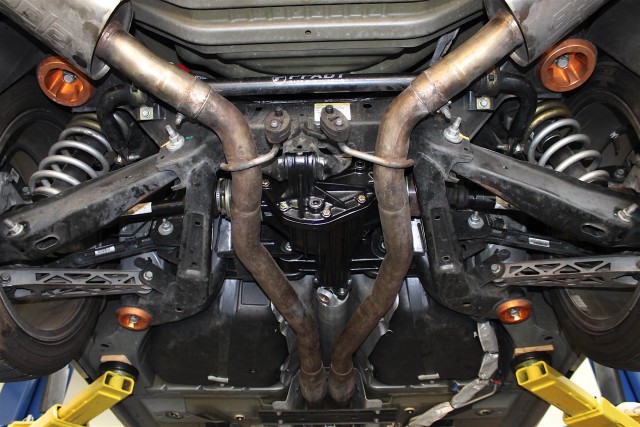
All buttoned up and ready to hit the road. The differential’s black Enduraguard finish will keep it protected against the elements while helping it shed an extra bit of heat as well.




